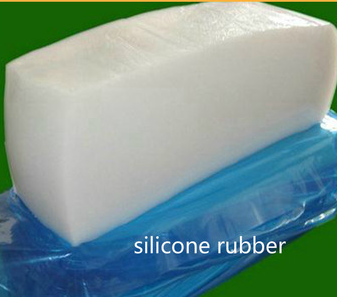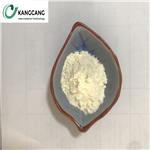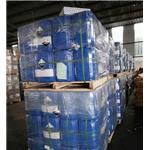You Need to Know About Liquid Silicone Rubber
Oct 21,2019
A Liquid Silicone Rubber material is a two-part platinum-cured elastomer that can be injected into a mold cavity to manufacture a part. Liquid Silicone Rubber is very versatile in the elastomer industry and is seen across a whole spectrum of parts from consumer products to medical devices and everything in between.
The operating temperature range for Liquid Silicone Rubber can be between -65°C to150°C, which short peaks to 260°C. With post cure, it offers very low compression set and can meet low outgassing down to TML < 1 percent and CVCM < 0.1percent. These polymers are translucent, which means they can be pigmented to match any color requirement. Liquid Silicone Rubber also has quick cycle times and less raw material handling — leading to quicker delivery times and greater throughput.
To help manufacturers unleash the full potential of this material, we compiled everything you need to know about liquid silicone rubber.
Making the polymer
There are a couple of different ways to make the base polymer for an Liquid Silicone Rubber. Like all elastomeric materials, there needs to a polymerization reaction to create molecular chains. Vinyl and methyl siloxane groups are polymerized to form polydimethylsiloxane chains. These chains provide strength and flexibility to the material. This process will change it from the liquid, almost watery starting components, to the more viscous basic form of the Liquid Silicone Rubber. It’s in here that a lot of other properties can also be designed into the material, as well.

Once that main polymer gets created, the material gets reinforced normally with fumed silica. Unlike the organic materials where the filler of choice is carbon black or clays (pigmented materials), Liquid Silicone Rubber materials use other silicates to reinforce the polymer chains and add tensile strength to the material.
From here, the material is split into two halves and the catalyst (platinum) and crosslinker are added to separate halves. This greatly increases the shelf life of these materials. When blended together, there’s a short working life of Liquid Silicone Rubbers, averaging around eight hours. By splitting these halves, the material can potentially be stored for years with little worry of it curing during that time.
Types of Liquid Silicone Rubber
There are many types of Liquid Silicone Rubber materials. Some include:
Medical grades: In the later stages, an LSR will get stripped of extractable for medical applications, which have very sensitive requirements to avoid interacting with tissues. Removing the extractables also increases the strength of the material. These grades are typically broken down to restrictive (implant less than 30 days) and unrestricted (implant greater than 30 days). The composition of these grades are normally the same, but it is the level of biocompatibility testing that was performed on the material. Many vendors establish FDA master files to help customers get approval in their medical device.
Self-lubricating: Incompatible fluids can be mixed into the components. Once the silicone cures, this material will bloom to the surface to create a slippery surface. Then, 1.5 to 3 percent of a phenyl fluid is added to the silicone depending on the rate of fluid the customer wants to bloom.
Conductive: Conductive-grade carbon black is added to the LSR components. These grades have very good mechanical properties compared to metal particle filled silicones and can get down to 9 ohm-cm volume resistivity.
Self-bonding: Adhesion promoters are added. This offers primerless adhesion to various substrates. The material works well on glass filled nylons, stainless steel, aluminum and polysulfones. It offers a perfect solution for composite seals to reduce assembly components or provide even better sealing between two mating components.
Radio Opaque: Barium sulfate is added to allow the silicone part to be detected under X-Ray. This works well for medical applications such as wound drains and catheters.
FLSR: Fluorine is reacted to the polymer chain and can be blended typically at 60/40 ratio or a 100 percent fluorosilicone Liquid Silicone Rubber (FLSR) polymer. The benefit is a highly resistant silicone for fuels and oils. Typically, these FLSR won’t meet current MIL standards for fluorosilicone. At the present time there is no FDA food grade or medical polymers.
Flame Retardant: Most LSR rubber will meet a UL 94 HB rating without any additives. Higher ratings, like V1 or VO, require additives that release water when decomposed.
Fast Cure: Just like with an ethylene propylene where a terpolymer with double bonds is added, a manufacturer of Liquid Silicone Rubbers can determine the level of crosslinking of the elastomer by controlling the amount of functional groups that are added as cure sites in the material. This results in higher reactivity to produce very quick cycle times for mass production of silicone parts.
The Liquid Silicone Rubber manufacturing process
When a high-consistency silicone is brought into our facility, it almost always needs some sort of labor to transform it into a moldable size and shape. In most cases, all that’s required is the material be sized and shaped for the mold cavity — which is referred to as performing the material.
Some materials have an extra step of adding cures to the material (which were left out to increase the shelf stability of the material). An Liquid Silicone Rubber removes all of those steps. Here is a look at the Liquid Silicone Rubber manufacturing process:
1. Liquid Silicone Rubber A + B components typically come in a 5 gallon pail or 55 gallon drum. A process controlled pumping kit presses down on the buckets to force the material into static mixer and feed into the injection unit.
2. Then, streams of pigment can be added and controlled. In the injection, press material will be mixed together additionally with a screw and pushed forward to create a “shot” of material, or the amount needed to fill the mold.
3. After the material is injected into the mold, it will then stay clamped together to cure the Liquid Silicone Rubber. Then, either an operator or a robot will remove the cured product from the mold and the cycle repeats. It is a very quick efficient process, that typically averages 30 seconds.
4. Conversely, with an organic material or high consistency silicone, the average cycle time to get a part made is around six or more minutes. Peroxide cured materials take even longer, commonly around nine minutes. Liquid Silicone Rubber can lead to a significant cost savings in labor over a high consistency silicone material.
5. Secondary steps like post bake can help reduce volatilities and improve compression set. And the deflashing process removes unwanted flashing. It’s then cleaned to remove foreign material and packaged for shipment.
- Related articles
- Related Qustion
- Where does silicone rubber come from? Oct 18, 2019
Silicone itself is made up of carbon, hydrogen, oxygen and silicon. Note that the ingredient contained within silicone is spelt differently. The ingredient silicon comes from silica which is derived from sand. The process to make silicon is
Doxycycline may not be appropriate for everyone. It may interact with some other drugs and can cause side effects. Doctors will use caution when prescribing doxycycline to children and pregnant women.....
Oct 21,2019APIGelatin is a translucent, colorless, flavorless food ingredient, derived from collagen taken from animal body parts. Brittle when dry and gummy when moist. Gelatin is made from collagen. Collagen is one of the materials that make up cartila....
Oct 21,2019Food AdditivesSILICONE RUBBER
63394-02-5You may like
- Exploring the Compound H2O: Water
Feb 27, 2024
- Does the Molecule of Water Have Ionic Charge?
Feb 5, 2024
- The uses of 2',7'-Dichlorofluorescein
Jan 18, 2024
- SILICONE RUBBER
-

- $9.00 / 10g
- 2024-04-26
- CAS:63394-02-5
- Min. Order: 10g
- Purity: 99%
- Supply Ability: 10 tons
- SILICONE RUBBER
-

- $66.00 / 1kg
- 2023-02-13
- CAS:63394-02-5
- Min. Order: 1kg
- Purity: 99%
- Supply Ability: 20MT
- silicone rubber
-

- $1.00 / 1g
- 2019-07-31
- CAS:63394-02-5
- Min. Order: 1g
- Purity: 99%
- Supply Ability: 5 Ton/Tons per Day




